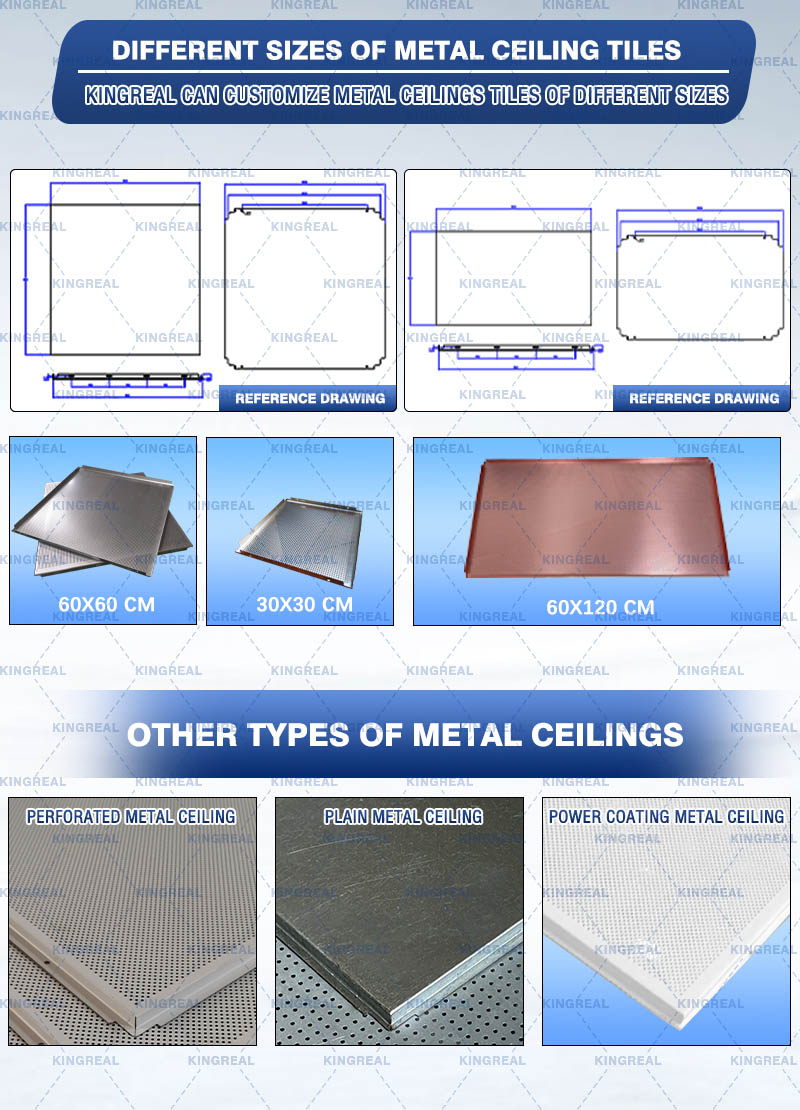
What factors affect the quality of metal ceiling?
2024-11-18 17:17
In recent years, the use of suspended ceilings in home decoration is getting higher and higher. When people put the ground, the wall for a revolutionary armed, from which to enjoy the endless elegance and fashion of life pleasure. As a result, the fashion trend quickly spread to the last place in the home that has not been touched by fashion - the roof.
From the initial paper paste ceiling to the later use of gypsum board, perhaps people just to solve the problem of roof formation. Even if there are many shortcomings in these materials, they will not think about too many solutions. And now, when people have more and more demand for roof decoration, metal ceiling tiles began to appear in the market. Among them, the metal ceiling is produced by the metal ceiling production line for metal raw materials leveling, punching and cutting angles. With the continuous development, the metal ceiling has become the protagonist of this home improvement project with its superior performance and many advantages.

Today, this article will introduce you to the metal ceiling tile.
The aluminum materials used for the ceiling are all aluminum alloys, and it is impossible to have pure aluminum.
However, due to the difference in alloy content, the mechanical properties of aluminum alloys are different. At present, the aluminum alloys used in domestic ceiling materials are roughly divided into five grades:

The first grade: aluminum magnesium alloy. At the same time, it contains part of manganese. The biggest advantage of this material is that it has good oxidation resistance. At the same time, because of the content of manganese, it has a certain strength and rigidity. It is an ideal material for ceilings.

The second grade: aluminum-manganese alloy. The strength and stiffness of this material are slightly better than that of aluminum-magnesium alloy. However, the oxidation resistance is slightly lower than that of aluminum-magnesium alloys. The strength and stiffness of this material are slightly better than that of aluminum-magnesium alloy. However, the oxidation resistance is slightly lower than that of aluminum-magnesium alloys. If both sides are protected, it basically solves the problem that its oxidation resistance is not as good as that of aluminum-magnesium alloys.

The third grade: aluminum alloy. The alloy has less manganese and magnesium content. Therefore, its strength and stiffness are significantly lower than those of aluminum-magnesium alloys and aluminum-manganese alloys. Because it is soft and easy to process, as long as it reaches a certain thickness, it can basically meet the basic flatness requirements of the ceiling. However, its oxidation resistance is obviously inferior to that of aluminum-magnesium alloys and aluminum-manganese alloys. Moreover, it is easy to deform during processing, transportation and installation.

The fourth grade: Ordinary aluminum alloy, the mechanical properties of this material are not stable.

The fifth grade: The raw material of this kind of plate is that the aluminum processing factory melts and ties the aluminum ingot into an aluminum plate. Chemical composition is not controlled at all. Due to the uncontrolled chemical composition, the properties of these materials are extremely unstable, resulting in severely uneven product surfaces, product deformation, and high susceptibility to oxidation.

From the above grades of raw materials, it is not difficult for us to analyze the quality assurance of each type of ceiling after molding. Nowadays, many people think that the thicker the plate, the better. It can be known through the analysis of the above several raw materials. If it is the same raw material, the thicker the plate, the better, but if it is the fifth-grade plate, no matter how thick it is.
Ordinary consumers do not have a good understanding of the material of the original plate when purchasing aluminum gussets. The easiest way to feel the strength and hardness of the aluminum plate is to feel it by hand.
Get the latest price? We'll respond as soon as possible(within 12 hours)











